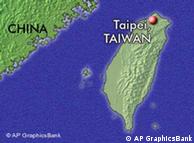 巴基斯坦陸、空部隊聯合行動 | 巴基斯坦軍方表示,已從塔利班手上奪回西北部布納地區的控制權,並殺死了至少50名武裝分子。 布納地區距離首都伊斯蘭堡不到100公里,車程數小時。此前,塔利班武裝從斯瓦特河谷大本營向外擴展,攻下了布納地區。 巴基斯坦軍方說,機降部隊抵達布納的達格鎮與地面部隊匯合,奪回達格鎮的控制。 巴基斯坦部隊自星期一(4月27日)開始在布納打擊塔利班以來,當地成千上萬的平民逃離家園。 巴基斯坦政府擔心塔利班試圖從斯瓦特河谷擴大勢力,軍方動員陸軍和空軍部隊與警察聯合采取行動。 在伊斯蘭堡的BBC記者說,巴基斯坦軍方對斯瓦特河谷的攻擊反映了沖突極可能擴散至河谷以外地區。 巴基斯坦政府與斯瓦特河谷的激進伊斯蘭教士簽署了和平協議。但巴基斯坦政府說,多達500名武裝分子違反這項協議。 巴基斯坦政府和塔利班早些時候簽署的和平條件是:在包括迪爾、斯瓦特河谷、布納等地區的馬拉坎地區實施伊斯蘭法律,換取塔利班放下武器。 Pakistan Claims to Retake Town
Published: April 29, 2009 ISLAMABAD, Pakistan — After a week of strong criticism here and abroad over its inaction, the Pakistani military claimed on Wednesday to have reasserted control of Daggar, a key town just 60 miles from the capital in the strategic district of Buner which was overrun by hundreds of Taliban militants last week. The development came one day after the military deployed fighter jets and helicopter gunships against the insurgents. It was not immediately clear what level of resistance the Taliban had offered. Pakistan also agreed to move 6,000 troops from its Indian border to fight militants on its western border with Afghanistan, according to a Pakistani official who did not want to be identified discussing troop movements in advance. But American officials, who welcomed the redeployment, said Pakistan was still not doing enough to fight the insurgents, who are tightening their hold on the country. The Americans expressed frustration that Pakistan was still rebuffing their offers to train more Pakistanis to fight Al Qaeda and the Taliban. News reports on Wednesday quoted an unidentified military spokesman as saying government troops dropped from helicopters near Daggar, the administrative center of Buner, to link up with other government forces in the region. There was no immediate word on casualties. The campaign in Buner began Tuesday after government forces completed a two-day operation against Taliban militants in Dir, a neighboring district, said a military spokesman, Maj. Gen. Ather Abbas. The Taliban advance into Buner has brought heavy pressure on the military from the United States and other Western countries. It has also fortified a growing consensus among Pakistani politicians and the public that the Taliban have gone too far and that the military should act to contain the spread of the insurgency. Under threat of military action, the Taliban staged a show withdrawal from Buner at the end of last week, General Abbas said. But he said the militants were trying to expand the space they controlled beyond the Swat Valley, which borders Dir and Buner. At a news conference, he played three tapes of what were described as telephone intercepts of the main Taliban leader, Mullah Fazlullah, talking to one of his commanders about making a show withdrawal for the news media while telling the fighters to put away their weapons and lie low. “In Buner, people are living under coercion and in fear,” General Abbas said. “There was no reason to intimidate people in Buner, and the militants started intimidating people and forcibly recruiting young people to take them back to Swat for military training.” “The government acted with patience,” he added, “but eventually there was no other way except to launch an operation.” Earlier in the day, the new interior minister, Rehman Malik, said the Taliban had ignored repeated requests from the government of President Asif Ali Zardari to leave Buner. “I warn them to vacate the area,” Mr. Malik told reporters. “We are not going to spare them. Action will be taken if anyone tries to block our efforts to re-establish the writ of the government in Buner and other areas.” Several events contributed to the shift among politicians and the public. Video of the flogging of a 17-year-old woman in Swat by the Taliban several weeks ago shocked many in the country. A radical cleric who helped negotiate the peace deal in Swat, Maulana Sufi Muhammad, said recently that Pakistani institutions like Parliament and the high courts were un-Islamic, a comment that angered politicians from all parties. Finally, the militants’ move into new districts last week impelled the Pakistani Army to move against the Taliban. The 6,000 troops to be shifted had originally been on Pakistan’s western border but were sent to the Indian border in December, after the terrorists’ attack in Mumbai in which 163 people were killed the previous month. India had responded to the attack, which Indian and American officials concluded was planned in Pakistan and carried out by Pakistanis, by massing troops on the Pakistani border. The promised redeployment, which will essentially return Pakistan’s military presence in the northwest to pre-Mumbai levels, comes as American and Pakistani officials are preparing for what are likely to be tense meetings in Washington next week between President Obama, President Zardari and President Hamid Karzai of Afghanistan. American officials have alternately criticized and praised Pakistan, in the hope of goading it into taking tougher action against the Taliban, and on Tuesday they engaged in both strategies. Early in the day, a senior military official, one of several American officials who spoke on condition of anonymity in order to discuss the security strategy of an ally, expressed anger about what he saw as Pakistan’s fecklessness in trying to combat militants within its borders. “It is reasonable for Pakistanis and Americans alike to ask why there has not been a more robust, sustained and serious response to elements that assassinated Benazir Bhutto, blew up the Marriott Hotel, attacked a visiting cricket team and assaulted a police academy,” the official said, ticking off a series of violent events that began with the killing of the former prime minister. He said it was “inexplicable” that the incidents had not “galvanized the Pakistani military and civilian leaders to link arms in a comprehensive, sustained campaign to fight back.” But later in the day, after the United States received word of the troop movement, the official took a different tone. “It’s too soon to say how it’s going to turn out,” the official said. “But it’s a promising sign that they finally recognize the existential threat to their country.” American officials said they were continuing to press Pakistan to accept more American trainers, an issue likely to come up in the meetings next week. More than 70 American military advisers and technical specialists are already working in Pakistan to help its armed forces battle militants in the lawless tribal areas, but the United States would like to expand the effort. Pakistan has balked, American officials said, because it does not want a large American presence in its country. “There’s a red line about our advisers and any foreign boots on the ground in Pakistan right now,” a senior administration official said. He said that the United States was “doing everything we can within the constraints that are currently placed on our engagement to be as helpful as we can.” The Pakistani military may have a difficult fight ahead. The Taliban have already been digging trenches and fortified positions, General Abbas said. There are indications that the fighting in Dir has been heavier than Pakistani officials have acknowledged, and that the civilian cost has been high. The military said some 70 militants had been killed in three days of fighting. But more than 30,000 civilians have fled their homes in the region, and some of them reported seeing bodies lying in the streets and the fields as they fled, Amnesty International said Tuesday. “Neither the Taliban nor the government forces seem to care about the well-being of the residents of Lower Dir,” Sam Zarifi, Amnesty International’s Asia-Pacific director, said in a statement. Carlotta Gall reported from Islamabad, and Elisabeth Bumiller from Washington. Helene Cooper, Mark Mazzetti and Mark Landler contributed reporting from Washington. Alan Cowell contributed from London. | 








 四川学校赈灾概念建筑设计比赛纪实
四川学校赈灾概念建筑设计比赛纪实







 Listen
Listen



